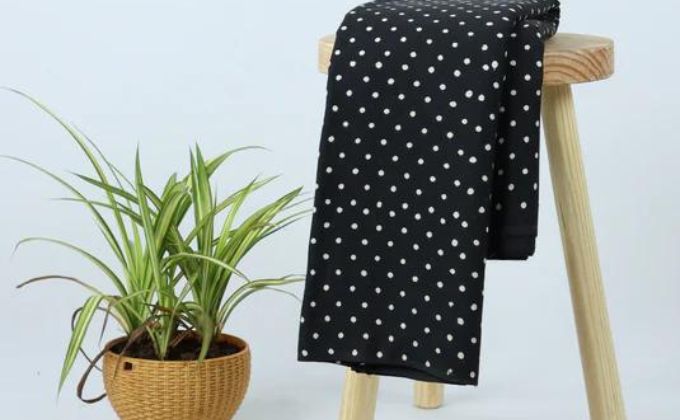Indian hand block print fabric is a textile art form that has endured for centuries, captivating the world with its intricate patterns and vibrant designs. Rooted deeply in the rich cultural heritage of India, hand block printing is more than just a decorative craft—it is a living tradition that reflects the artistry, skill, and passion of the artisans who have kept this ancient technique alive.
Let’s explore the history, process, and timeless beauty of Indian hand block print fabric.
The History of Hand Block Printing in India
Hand block printing has a long and storied history in India, with its origins tracing back to ancient times. The craft is believed to have been practiced as early as the 12th century, though some historical accounts suggest it could date back even further.
The art form flourished in regions like Rajasthan and Gujarat, where skilled artisans developed unique designs that were passed down through generations. These regions remain the heart of hand block printing in India today, with iconic patterns like Jaipuri block prints and Bagru prints still in high demand globally.
The technique was not only used for textiles but also played a significant role in India’s trade with other nations, especially during the Mughal era. Indian block-printed fabrics became highly sought after in countries like Persia, Africa, and Europe, establishing India’s reputation as a center of textile excellence.
The Process of Hand Block Printing
The process of creating hand block print fabric is as intricate as the designs themselves. Each step requires precision, patience, and a deep understanding of the craft. Here’s a look at the key stages:
- Designing the Block: The first step in block printing is carving the design onto wooden blocks. The blocks are often made from teak or rosewood and are intricately hand-carved by artisans. Each block corresponds to a different part of the design, with some designs requiring multiple blocks for different colors.
- Preparing the Fabric: The fabric, usually cotton or silk, is washed thoroughly to remove any impurities. This ensures that the dye adheres properly to the fabric and that the colors remain vibrant over time.
- Printing the Fabric: Once the block is ready and the fabric is prepped, the artisan dips the block into natural dyes and presses it onto the fabric. The block is applied with consistent pressure to create a clear, sharp design. Depending on the complexity of the pattern, multiple blocks and layers of dye are used to achieve the final look.
- Drying and Setting the Dye: After the fabric is printed, it is left to dry in the sun. Once dry, the fabric is washed again to remove excess dye, and in some cases, it is steamed to set the colors.
- Final Touches: Some fabrics undergo additional steps like embroidery or embellishments to enhance the overall design. The result is a beautiful, handmade fabric with a unique pattern.
The Allure of Hand Block Print Fabric
What makes Indian hand block print fabric so timeless is its authenticity and artisanal quality. Unlike mass-produced fabrics, each piece of block-printed fabric tells a story of craftsmanship and heritage. No two pieces are exactly alike, making each creation one-of-a-kind.
Here are a few reasons why block print fabric continues to charm designers, decorators, and fashion lovers alike:
- Artisanal Craftsmanship: The time and effort put into each piece of block-printed fabric elevate it beyond a simple textile. The attention to detail in every print showcases the artisan’s dedication and skill, making each piece feel like a work of art.
- Eco-Friendly Production: Many block-printing artisans use natural dyes derived from plants, minerals, and other organic sources. This not only results in stunningly vibrant colors but also promotes sustainable, eco-friendly production methods.
- Cultural Heritage: Hand block print fabrics are deeply intertwined with Indian culture and history. Owning or wearing a block-printed piece allows one to connect with this rich heritage, making it more than just a fashion statement.
- Timeless Designs: While fashion trends come and go, block prints have a timeless appeal. Whether it’s traditional floral patterns or contemporary geometric designs, these fabrics transcend trends, remaining relevant in both traditional and modern settings.
How to Incorporate Hand Block Prints into Your Life
Hand block print fabric’s versatility allows it to be used in various ways, from fashion to home décor. Here are a few ways to incorporate this timeless fabric into your lifestyle:
- Fashion: Hand block print fabrics are perfect for creating unique clothing items like sarees, dresses, and kurtas. Their vibrant patterns and rich textures add a unique charm to any outfit. Pair a block-printed scarf or dupatta with your everyday attire for a touch of tradition.
- Home Décor: Block-printed fabrics can be used for curtains, cushion covers, tablecloths, and bed linens. Their intricate patterns and earthy tones create a warm and welcoming ambiance in any room. A hand block print tablecloth can instantly elevate your dining space, while block-printed cushion covers add an artistic flair to your living room.
- Accessories: Hand block print fabrics can also be used to make accessories like bags, wallets, and scarves. These small, handcrafted pieces can add a pop of color and culture to your wardrobe.
Conclusion
Indian hand block print fabric stands as a testament to the enduring beauty of traditional craftsmanship. With each piece, artisans pass down the legacy of a craft that has been cherished for centuries. Whether you’re wearing a block-printed saree or using block-printed cushions in your home, you’re embracing a piece of history and culture. The timeless allure of hand block printing ensures that it will continue to inspire generations to come, making it a treasured part of India’s rich textile heritage.
